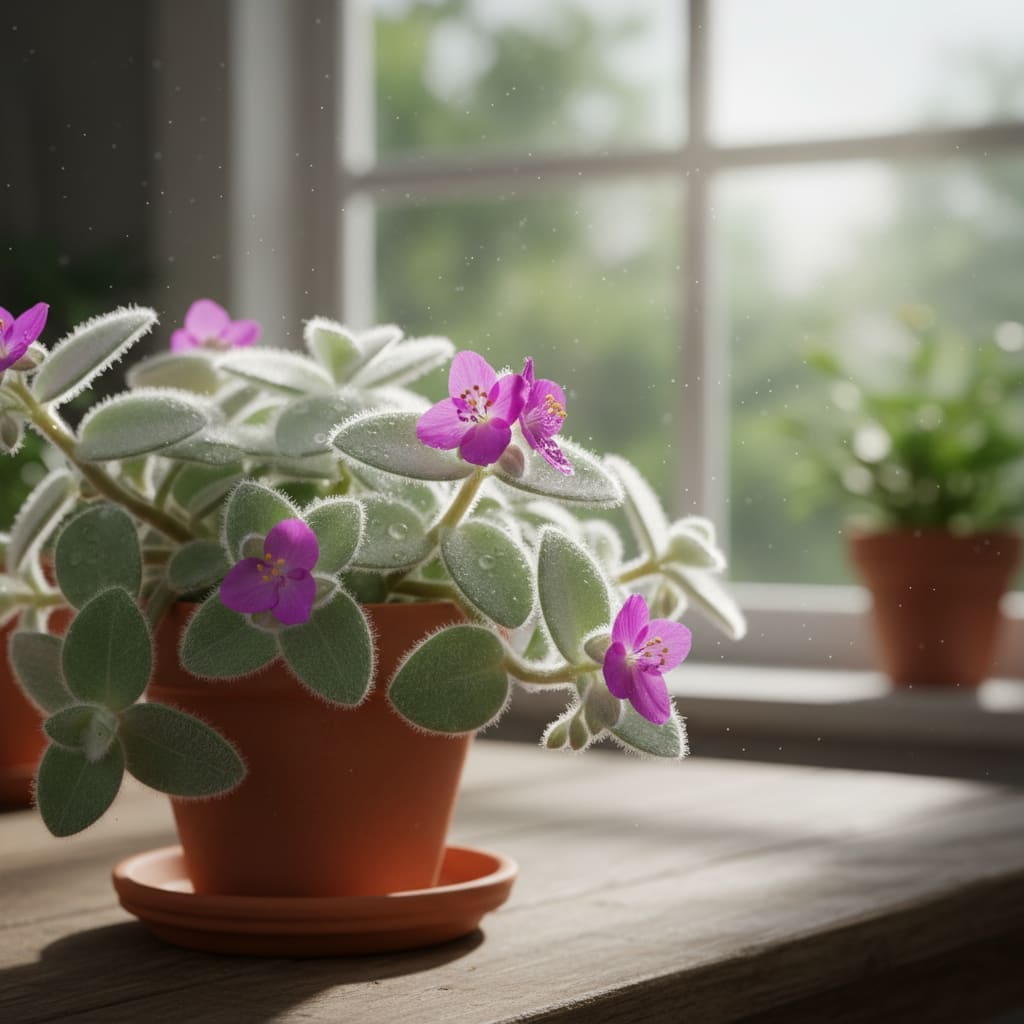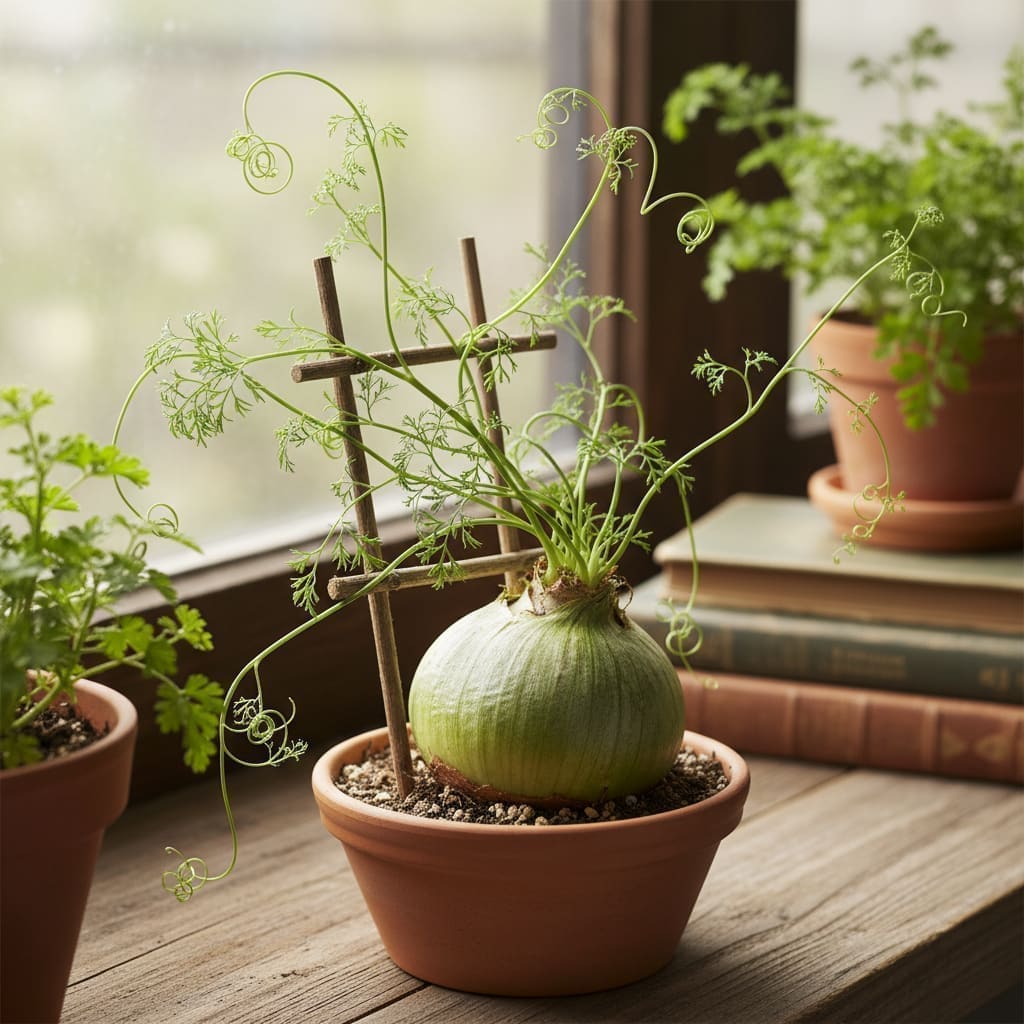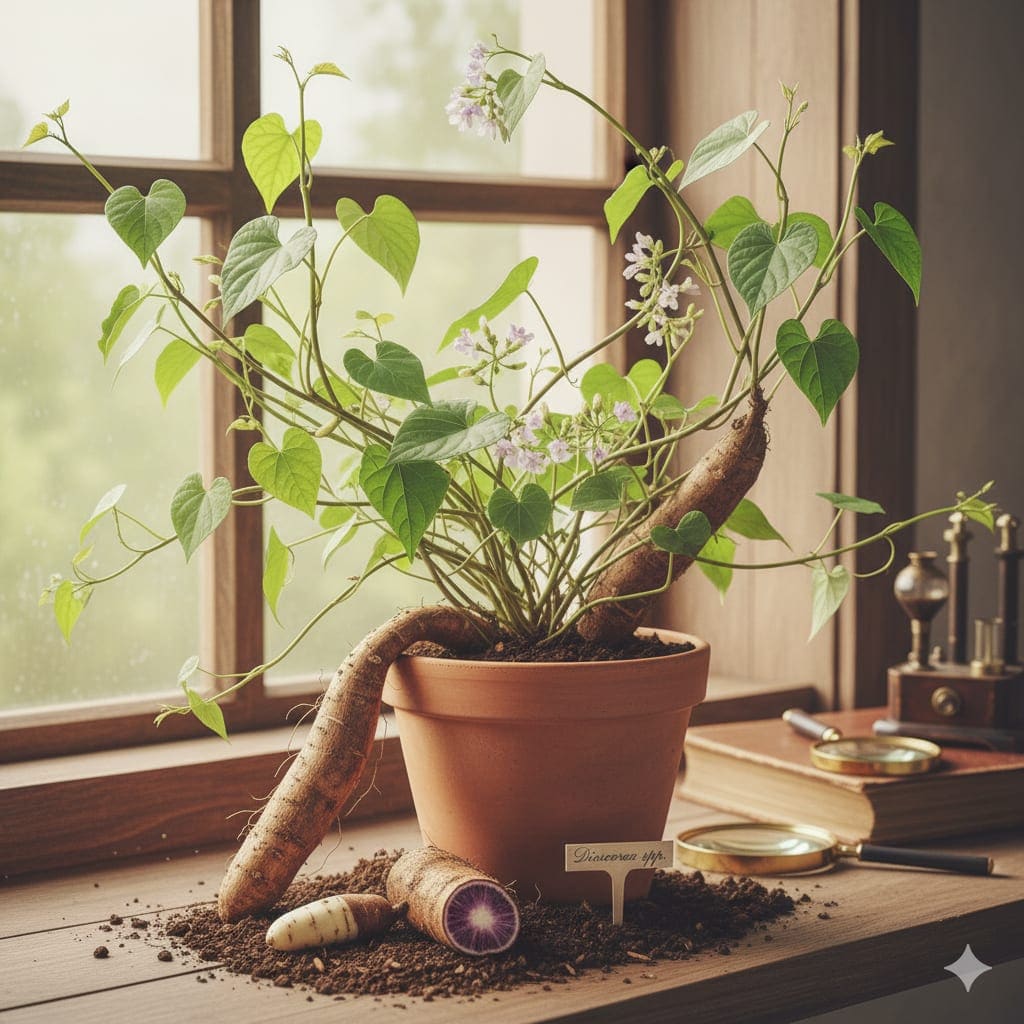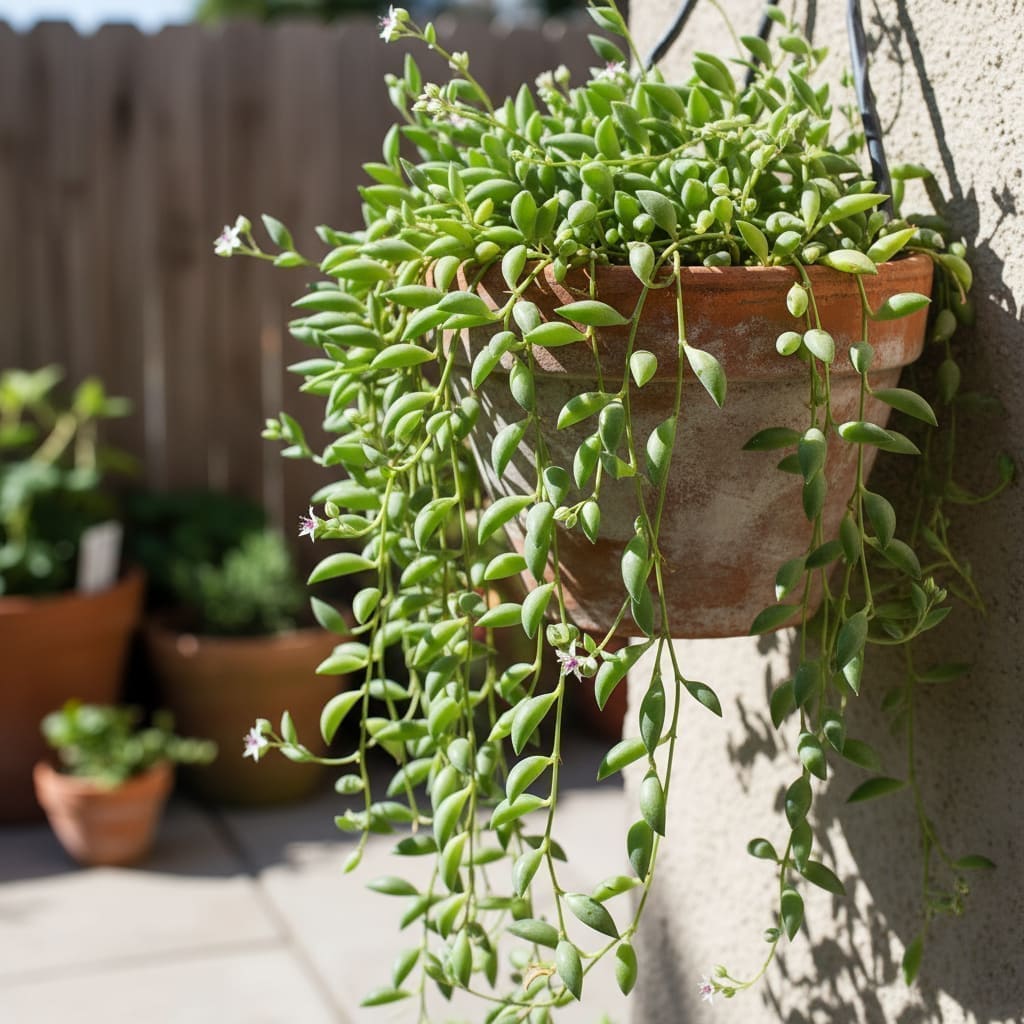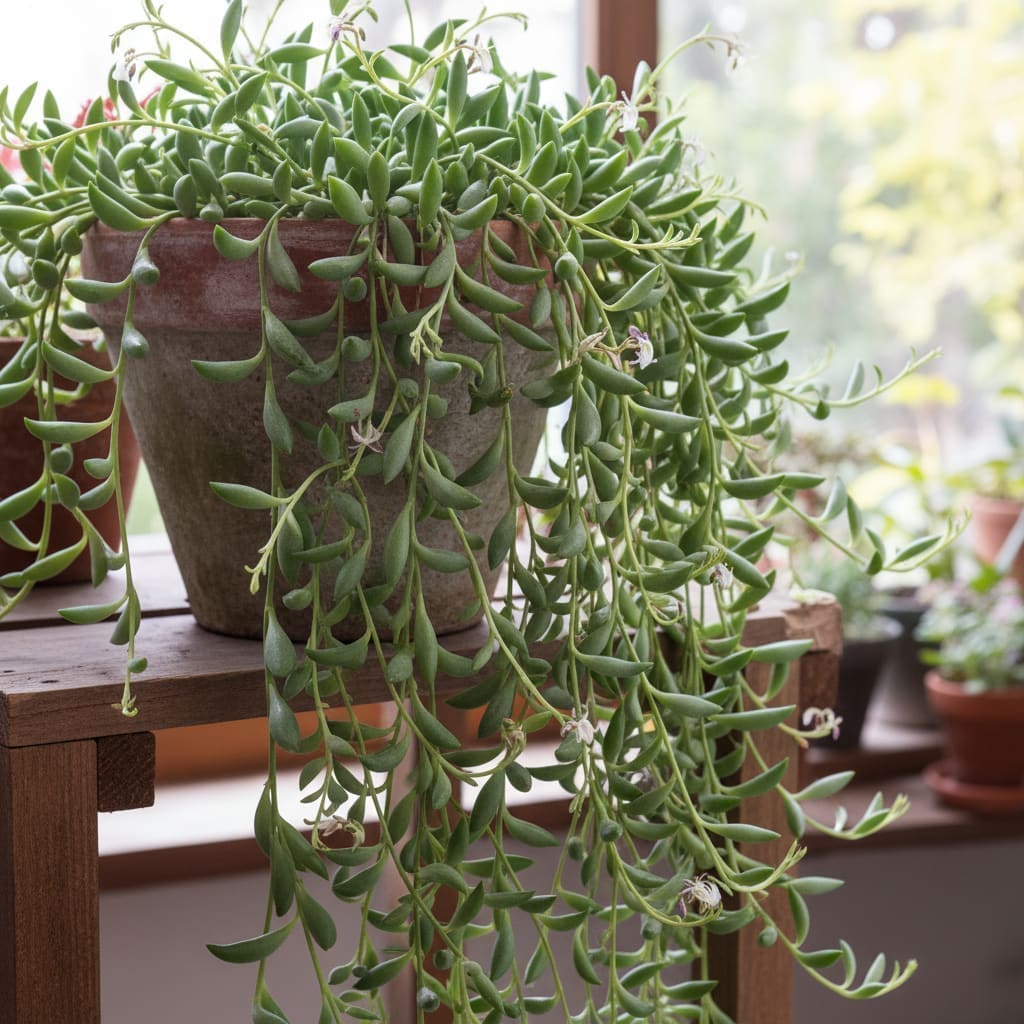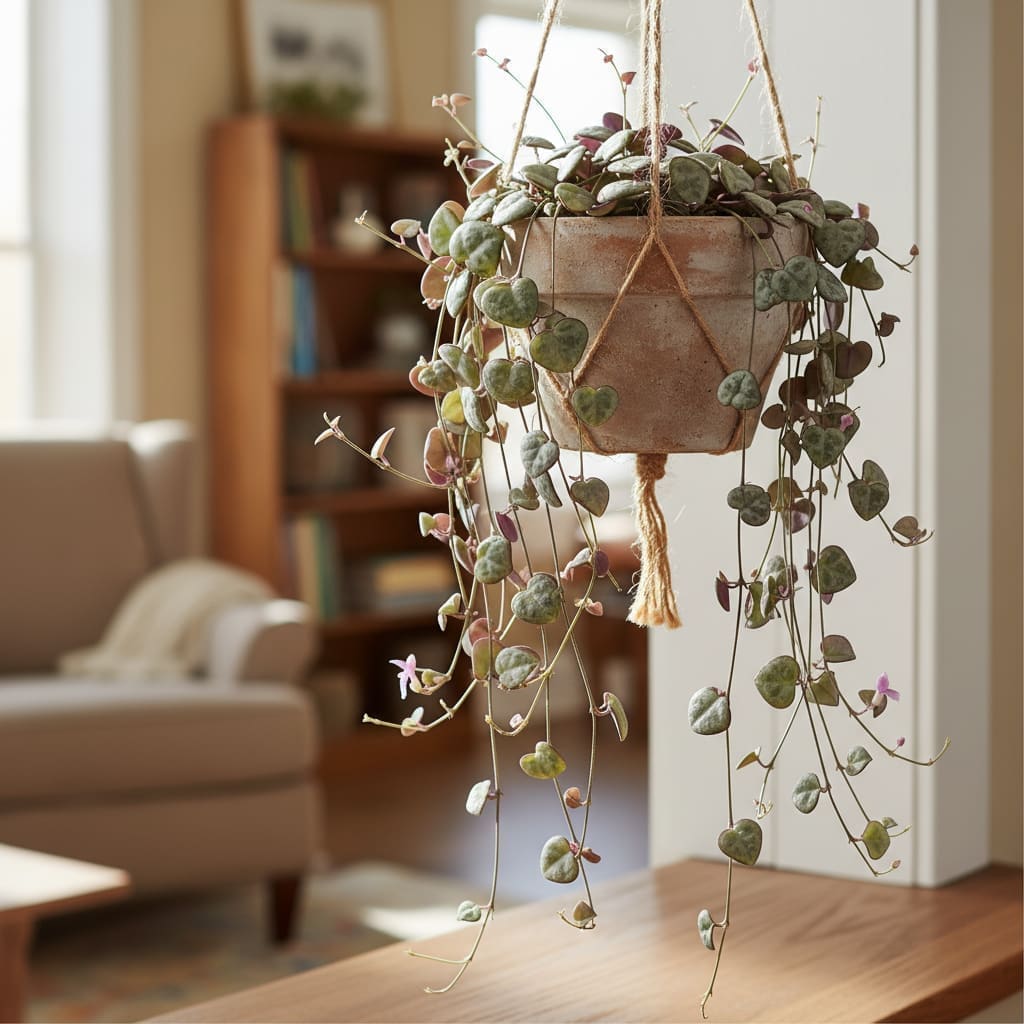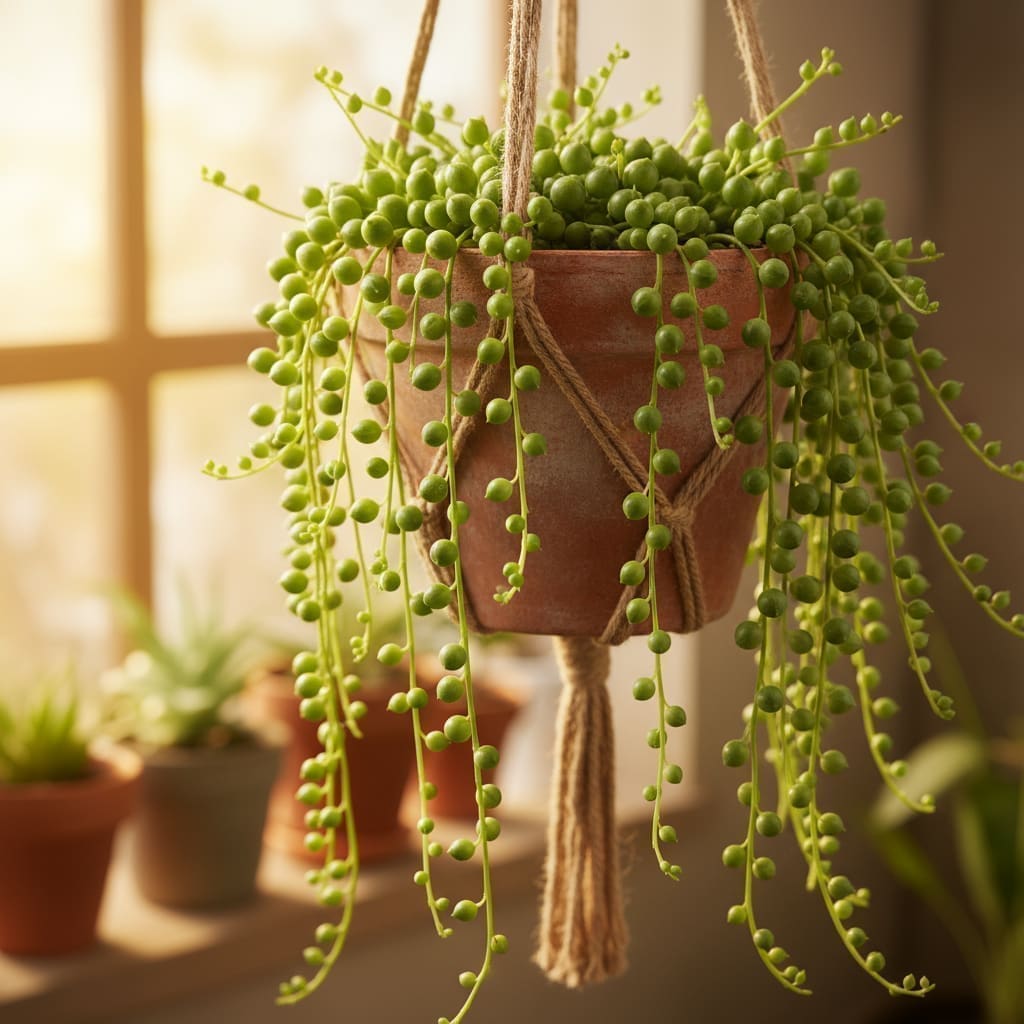Tradescantia sillamontana Care & Growing Guide
Overview
Tradescantia sillamontana, commonly known as White Velvet, Cobweb Spiderwort, or White Gossamer Plant, is a striking perennial native to the arid regions of Nuevo León, Mexico. Its most distinctive feature is the dense covering of silvery-white hairs on its leaves and stems, an adaptation that helps protect it from intense sunlight and conserve moisture in its desert habitat. This trailing or semi-climbing plant is valued for its unique texture, drought tolerance, and ease of care, making it a popular choice for both indoor and outdoor container gardens in suitable climates.
In the right conditions, Tradescantia sillamontana produces small, vivid magenta-pink flowers during the warmer months, adding a pop of color to its silvery foliage.
Identification & Growth Habit
Tradescantia sillamontana grows as a low, spreading plant with stems that can trail over the sides of pots or climb when supported. Its leaves are oval to lance-shaped, arranged alternately along the stems, and densely covered with fine white hairs. This tomentose texture gives the plant a soft, velvety look and feel.
Mature stems can reach 12–18 inches (30–45 cm) in length. Without pruning, the plant tends to sprawl, making it ideal for hanging baskets, raised planters, or as a groundcover in frost-free areas.
Light & Placement
Provide bright, indirect light for optimal growth. A location near an east- or west-facing window is ideal. Tradescantia sillamontana can tolerate some direct morning or late afternoon sun, which can enhance leaf coloration, but avoid prolonged exposure to harsh midday sun indoors, as it may scorch the foliage.
In lower light conditions, expect slower growth and more leggy stems. Outdoors in mild climates, place it in a spot with partial sun and protection from intense afternoon rays.
Watering & Humidity
This species prefers a low watering frequency. Allow the soil to dry out completely between waterings. Overwatering is the most common cause of problems, often leading to root rot. During winter, when growth slows, reduce watering further.
Tradescantia sillamontana tolerates average indoor humidity and even drier air, thanks to its desert adaptations. Avoid overly humid environments, as persistent moisture on leaves can encourage fungal issues.
Soil & Repotting
Use a well-draining potting mix, such as a cactus or succulent blend. Incorporating perlite or coarse sand improves aeration and drainage, reducing the risk of root rot.
Repot every 2–3 years or when the plant becomes root-bound. Choose a container with drainage holes to prevent water accumulation.
Fertilizing
Feed monthly during the active growing season (spring and summer) with a balanced, water-soluble fertilizer diluted to half strength. Avoid fertilizing in fall and winter when the plant is dormant or growing slowly.
Pruning & Training
Prune regularly to maintain a compact shape and encourage branching. Pinching back stem tips promotes fuller growth. Remove any leggy or damaged stems with clean, sharp scissors.
While naturally trailing, Tradescantia sillamontana can be trained to climb a small trellis or moss pole. Secure stems gently with plant ties, encouraging them to attach and grow upward.
Propagation
Propagation is straightforward and highly successful from stem cuttings.
Step-by-Step Propagation
- Choose a healthy stem and cut just below a node using sterilized scissors.
- Allow the cutting to dry for 12–24 hours to reduce the risk of rot.
- Plant the cutting in moist, well-draining soil, or place it in a jar of water until roots develop (usually within 1–2 weeks).
- If rooting in water, transfer to soil once roots are about 1–2 inches long.
- Keep the cutting in bright, indirect light and water sparingly until established.
Common Problems
Pests
- Spider mites: Look for fine webbing and stippled leaves. Increase air circulation and treat with insecticidal soap if needed.
- Mealybugs: White, cottony masses on stems and leaf nodes. Remove manually with a cotton swab dipped in alcohol or apply a suitable insecticide.
- Aphids: Often found on new growth. Rinse off with water or use neem oil spray.
Diseases
- Root rot: Caused by overwatering or poorly draining soil. Remove affected roots and repot in fresh, dry mix.
- Leaf spot/fungal issues: Avoid overhead watering and ensure good airflow.
Toxicity & Pet Safety
Warning: Tradescantia sillamontana is considered toxic to pets if ingested. It can cause irritation to the mouth and digestive tract. Keep out of reach of cats, dogs, and other animals.
Styling & Decor Tips
- Use in hanging baskets to showcase its trailing stems and silvery foliage.
- Pair with deep green or burgundy-leaved plants for contrast.
- Place in a terracotta pot to complement its desert origins and enhance drainage.
- Outdoors in frost-free climates, use as a groundcover in rock gardens.
Varieties & Cultivars
Tradescantia sillamontana is not widely hybridized, but its appearance can vary slightly depending on growing conditions. Some plants may have denser hair coverage or more intense flower coloration.
Buying Tips & Maturity
When purchasing, look for plants with firm, upright stems and evenly colored leaves. Avoid specimens with mushy stems or signs of pests. Younger plants establish quickly, while mature specimens may flower sooner in the growing season.
Seasonal Care
- Spring/Summer: Active growth period; water thoroughly but infrequently, fertilize monthly, and prune as needed.
- Fall: Reduce feeding, maintain bright light, and monitor for pests as indoor heating starts.
- Winter: Water sparingly, protect from cold drafts, and avoid temperatures below 50°F (10°C).
FAQ
- How often should I water Tradescantia sillamontana? Only when the soil is completely dry; frequency varies with season and environment.
- Can it grow outdoors year-round? Only in frost-free climates; otherwise, bring indoors before temperatures drop below 50°F (10°C).
- Why are my plant’s leaves turning brown? Possible causes include too much direct midday sun, underwatering, or low humidity extremes.
- Does it need high humidity? No, it tolerates average to low indoor humidity well.
- How can I make it bushier? Pinch back stem tips regularly to encourage branching.
Fun fact: The silvery hairs on Tradescantia sillamontana’s leaves act as a natural sunscreen, protecting it from UV rays and reducing water loss—an adaptation to its desert origins.
Source: Wikipedia
